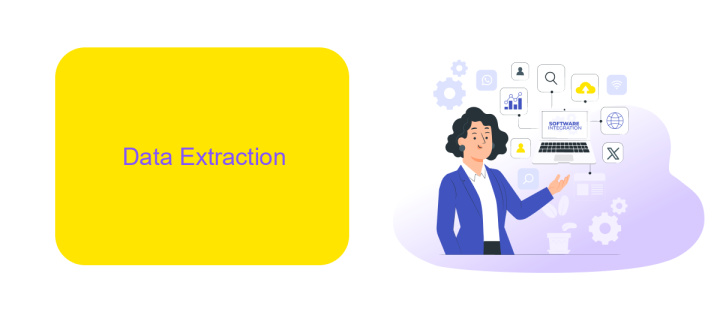ETL Data Flow
ETL (Extract, Transform, Load) data flow is a crucial process in data management and analytics. It involves extracting data from various sources, transforming it into a usable format, and loading it into a database or data warehouse. This process ensures that data is accurate, consistent, and readily available for analysis, helping businesses make informed decisions.
Introduction
ETL (Extract, Transform, Load) data flow is a fundamental process in data management and analytics. It involves extracting data from various sources, transforming it into a suitable format, and then loading it into a destination database or data warehouse. This process ensures that data is accurate, consistent, and ready for analysis.
- Extract: Gathering data from multiple sources, such as databases, APIs, and flat files.
- Transform: Cleaning, normalizing, and enriching the data to meet specific requirements.
- Load: Inserting the transformed data into a target system for further use.
Effective ETL processes are crucial for businesses to make informed decisions based on reliable data. Tools like ApiX-Drive simplify the integration and automation of data flows, making it easier to connect various data sources and destinations without extensive coding. By streamlining ETL processes, organizations can achieve better data quality and faster insights.
Data Extraction

Data extraction is the first step in the ETL process, involving the retrieval of data from various sources. These sources can include databases, cloud services, APIs, and even flat files like CSVs. The goal is to gather all necessary data in a raw format, which will later be transformed and loaded into a data warehouse or other storage solutions. Effective data extraction ensures that the subsequent steps in the ETL process can proceed smoothly and accurately.
One of the critical aspects of data extraction is the integration of various data sources. Tools like ApiX-Drive can simplify this process by providing seamless connections to multiple platforms, enabling automated data retrieval without the need for extensive coding. ApiX-Drive supports a wide range of integrations, making it easier to collect data from different systems and ensuring that the extracted data is consistent and up-to-date. This automation not only saves time but also reduces the risk of errors, enhancing the overall efficiency of the ETL workflow.
Data Transformation

Data transformation is a crucial step in the ETL (Extract, Transform, Load) process, where raw data is converted into a format suitable for analysis and reporting. This phase involves several operations to ensure data integrity, consistency, and usability.
- Data Cleaning: This involves removing duplicates, correcting errors, and handling missing values to ensure the dataset is accurate.
- Data Integration: Combining data from various sources into a cohesive dataset. Tools like ApiX-Drive can automate and streamline this process by providing seamless integrations.
- Data Aggregation: Summarizing data to provide a higher-level overview, such as calculating totals or averages.
- Data Transformation: Converting data types, normalizing values, and applying business rules to align data with the target schema.
Effective data transformation ensures that the data is reliable and ready for the next steps in the ETL pipeline. Leveraging tools like ApiX-Drive can significantly enhance the efficiency and accuracy of data integration, making the transformation process smoother and more effective.
Data Loading

Data loading is a crucial phase in the ETL process, where transformed data is loaded into the target data warehouse or database. This step ensures that the data is available for analysis and reporting, enabling businesses to derive actionable insights from their data.
Efficient data loading requires careful planning to manage the volume of data and to ensure data integrity. It is important to choose the right loading strategy, whether it be full load, incremental load, or a combination of both, based on the specific requirements of the organization.
- Full Load: Loading all data from the source to the target system.
- Incremental Load: Loading only the new or updated data since the last load.
- Batch Processing: Loading data in batches at scheduled intervals.
- Real-Time Processing: Loading data in real-time as it becomes available.
Tools like ApiX-Drive can simplify the integration and automation of the data loading process. ApiX-Drive provides a user-friendly interface to set up data flows and automate data transfers between various systems, ensuring that the data loading process is efficient and reliable.
- Automate the work of an online store or landing
- Empower through integration
- Don't spend money on programmers and integrators
- Save time by automating routine tasks
ETL Best Practices
Implementing ETL processes efficiently requires adherence to several best practices. Firstly, data validation is crucial to ensure data quality and consistency. This involves checking for duplicates, missing values, and data type mismatches before data transformation. Additionally, maintaining a robust logging and monitoring system is essential for tracking ETL process performance and troubleshooting issues promptly. Regular audits and updates should be scheduled to keep the ETL pipeline optimized and secure.
Another best practice is to leverage automation tools for seamless integration and data flow management. For instance, services like ApiX-Drive can automate data transfers between various platforms, reducing manual intervention and minimizing errors. ApiX-Drive simplifies the integration process by offering pre-built connectors and a user-friendly interface, ensuring that data is consistently and accurately moved across systems. Finally, always ensure that your ETL processes are scalable to accommodate growing data volumes and evolving business needs.
FAQ
What is ETL Data Flow?
Why is ETL important?
What are the common steps involved in an ETL process?
How can I automate the ETL process?
What are the challenges associated with ETL?
Apix-Drive is a universal tool that will quickly streamline any workflow, freeing you from routine and possible financial losses. Try ApiX-Drive in action and see how useful it is for you personally. In the meantime, when you are setting up connections between systems, think about where you are investing your free time, because now you will have much more of it.


